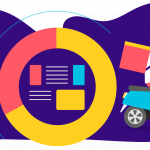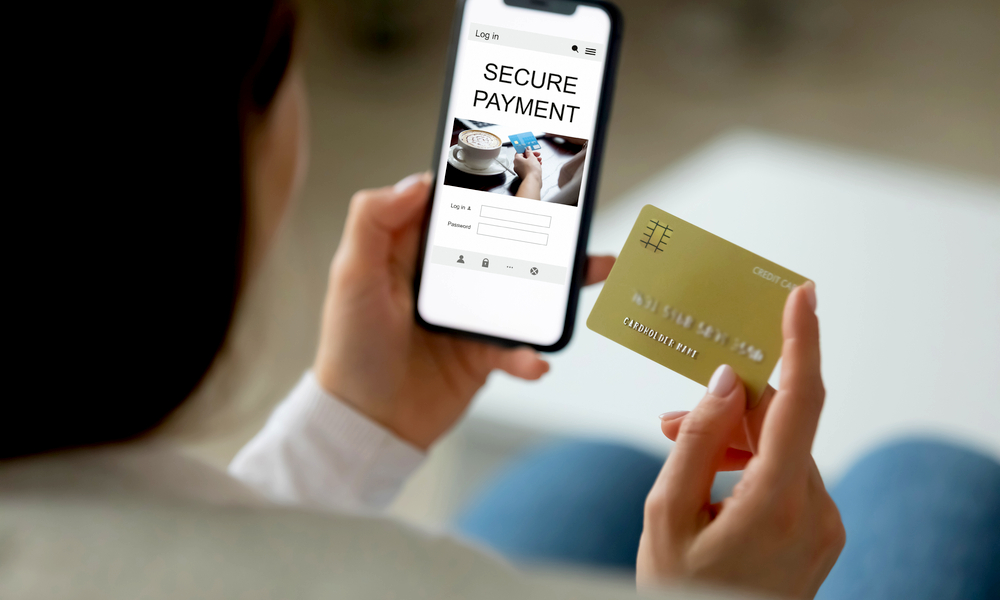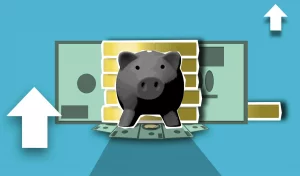Signing up for an online ordering system with a quick commerce enablement partner is a transformational move. With Blink, such a move comes at an unbelievably economical cost. However, one cannot deny the cost factor associated with laying down the fully functional basics of an online restaurant management system. Moreover, how much does an online ordering system cost, on average, these days?
Since more and more customers use smartphones and portable devices to place online food orders, the cost of an online ordering system for restaurants branches into different quadrants. From a cursory point of view, the entire system is split into these main categories:
- A fully-functional website
- Mobile food ordering app for iOS users
- Mobile food ordering app for Android users
- A fleet management system
Seeing such factors, the average online ordering system’s cost can go up north of several thousand dollars. Let alone, if we only take the expenses associated with creating a bug-free online food ordering app, with reiterations and maintenance from the developers’ end, you are looking at an expense budget of a minimum of $5000 – $10,000.
Then again, there’s the cost of having a website created with all the bells and whistles of a thriving business to attract online food ordering customers.
Having said, that, there’s a smart solution associated with online ordering system cost these days. It’s better to sign up for a partner account with a direct food ordering and fleet management portal, such as; Blink instead. We’ll talk about it later, but let’s see what online ordering systems are all about.
What Is An Online Food Ordering System?
Simply put, an online food ordering system is a technology stack of user assets with features and tools embedded in an internet-based platform to process your incoming orders. At a much deeper level, these online food ordering systems function in different loops. To understand this process, take a look at the steps below:
- A customer visits your branded food ordering app or website. He proceeds to add menu items to the cart.
- The customer proceeds to the checkout page where the online ordering system prompts the selection of a point-of-sale i.e. delivery or take-away. The system further asks users to select a payment method, and input their payment information.
- Once the payment is made from the customers’ end, it is processed through a payment gateway that’s already integrated with the restaurant management platform. These payments are credited to the restaurant’s bank account of choice periodically.
- The restaurant management prepares the order and dispatches it for delivery to the customer.
Studies reveal that almost 70% of the users place their orders either through a mobile food ordering app, or a website. Meanwhile, the majority of food hubs these days have their versions of online food ordering apps and websites, just to help their customers place and receive their food orders.
Essentially, online food ordering systems, in most cases, have sets of integrations that make the processes of marketing, monitoring customer and sales data, and scaling the business more efficient overall.
As of now, there are many online ordering systems available. However, each one of these systems is not the ideal match for your restaurant business. We’re here to help you make the right choice.
[INSERT_ELEMENTOR id=”2061″]
Online Food Ordering System Categories That You Need To Know
At present, there are two kinds of online ordering systems.
- Direct Online Ordering System
This is the type of online ordering system that offers you a fully branded website and mobile food ordering app with your brand’s logo on the front side.
Essentially, such online ordering systems are low-cost with no hidden fees. Restaurant owners and retailers, prefer to opt for direct online ordering platforms due to the feasibility factors, branding authority, customer engagement and marketing capabilities that their systems come with.
In this context, Blink Co. is a highly advanced direct quick commerce & fleet management enablement platform available for an extremely affordable monthly subscription.
With Blink, you get your own branded mobile app and restaurant food ordering website. Your customers will know your business by your brand name while your business leverages having direct contact with your customers, making it all the more easier for you to understand your customers’ problems and how your business can solve them.
What’s more important is that the built-in marketing and business intelligence tools, customer support live chat, and the branded webstore/mobile app(s) are all available from the get-go without any additional charges. You only need to sign up for a customer account and get started with your very own online food order menu only in a matter of days.
Check Out: Blink for Restaurants Page today to see how we move the needle for you.
- Third Party Online Food Ordering Systems
The perfect examples of third-party online food ordering systems are food aggregators such as GrubHub, DoorDash, FoodPanda, and UberEats, to name a few.
All of these companies offer a pre-existing mobile application that users can download to browse through tons of restaurants’ food ordering menus and order through the app. Essentially, the cost of retailing through such an online ordering system is very high.
FoodPanda and UberEats charge up to 35% – 45% of the total value of your incoming food order. Multiply that percentage by the total number of orders you receive daily, and you’ll clearly see how large a chunk of your revenue drains out in commission expenses every day.
At the same time, these third-party ordering systems have millions of users who already use the company’s app. That means that you have a relatively higher chance of pushing orders via the company’s platform, but it’s a process that masks your brand’s own visibility. In other words, customers recognize the third party food ordering app, way better than your name-brand food business because you’re not selling directly to them.
It won’t be a major dent in an aggregator’s pocket if you decide to close shop and move to an independent platform since there are enough profitable restaurants featured on third party food ordering portals these days.
[INSERT_ELEMENTOR id=”2061″]
Online Ordering System Cost: How Much Is Too Much, To Begin With?
Simply put, we recommend starting small.
If you own a food business startup, you’re already well aware of the overhead expenses, marketing costs, and other costs that prevent you from breaking even, let alone earning a profit.
The best-case scenario is to sign-up for a customer account at a direct food ordering and fleet management platform for a monthly subscription fee that’s easy on the pocket. At the end of the day, you only pay for the service charges that are part of your contract with the platform service provider.
Now we move on to the “How much do I pay” aspect of the online ordering system.
Regardless of your business volume at the moment, take different things into account.
- The sales you make daily
- The cost of food ingredients, overhead expenses, employees’ salary, etc. and others
- Features that you are ideally looking for in an online ordering system for restaurants
- Your business requirements in terms of marketing, self-promotion, branding, and customer engagement
It is important to identify the core features and functionalities of online ordering systems your business needs before even getting started. Fortunately, many companies have different solutions available at different costs.
The exact amount that you will end up paying, depends on the type of online ordering system you use – i.e., whether it is a direct ordering platform or a third-party online ordering solution. Secondly, you will end up paying the cost against the features that the system has.
To that effect, feel free to do your due diligence before signing up for a customer account. Read online ordering system reviews, talk to existing restaurant owners who already use such systems, and research the hidden cost factor if any.
Afterward, you can decide on whether you want to pay for the selected ordering system on a monthly basis, or a per plan basis. Take all such factors into account, and eventually, you will be able to get an online ordering system that’s worth much more than the price tag.
What Is An Estimated Set-Up Cost For Online Food Ordering Systems
The cost of an online food ordering system will vary depending on the features you need and the size of your business. Basic online ordering systems can start as low as $20 per month, while more advanced systems can cost up to $500 per month. Set-up costs will also vary depending on the complexity of your system but can range from $500 to $5,000.
The average cost of an online food ordering system is $97 per month. However, the cost will vary depending on the size of your business and the features you need.
Yes, most online food ordering systems have a monthly fee. The average monthly fee is $97, but it can range from $20 to $500 per month.
The set-up cost for online food ordering systems will vary depending on the complexity of your system. Basic systems can cost as little as $500, while more advanced systems can cost up to $5,000.?
Things To Consider When Adding An Online Food Ordering System To Your Restaurant
Online food ordering systems have become increasingly popular as they offer a convenient way for customers to order food from their favourite restaurants. These systems also allow restaurants to take orders online and track customer information. This can help restaurants improve their customer service and increase sales.
If you’re considering adding an online food ordering system to your restaurant, there are a few things to keep in mind. First, you’ll need to choose a system compatible with your existing website and POS system. You’ll also need to ensure that the system can handle online payments. Finally, you should consider the customer service and support offered by the provider.
Best Online Ordering Systems – 2021
There are several online food ordering systems available on the market today. These systems vary in features, price, and compatibility. To help you choose the best system for your restaurant, we’ve compiled a list of the best online ordering systems for 2021.
Systems to consider include:
– Toast POS: Toast is a popular point-of-sale system that offers an online ordering module. The online ordering module allows customers to place orders online and pick them up in-store. Toast POS is a cloud-based system, so it’s easy to set up and use. It’s also compatible with most websites and POS systems.
– ChowNow: ChowNow is an online food ordering system that allows customers to place orders online or through a mobile app. Customers can pay online or in-store. ChowNow also offers features to help restaurants improve customer service, such as online reservations and delivery management.
– Olo: Olo is an online food ordering system that works with many popular restaurant POS systems. Customers can place orders using online channels or through a mobile app conveniently.
– Food For All: Food For All is an online food ordering system that allows customers to order food from their website or through a mobile app. Customers can pay online or in-store.
–Blink: Blink is an online food ordering system that allows customers to place orders online or through a mobile app. Customers can pay online or in-store. Blink also offers features designed to help restaurants improve their customer services, such as online reservations and delivery management.
Good luck!
Related Articles:
 5 Reasons Why You Need an Online Ordering System For Business In Food Industry
5 Reasons Why You Need an Online Ordering System For Business In Food Industry
 How restaurants should manage aggregators in 2023
How restaurants should manage aggregators in 2023
 11 Best Grocery App Delivery Tools to Use in 2022 (Globally)
11 Best Grocery App Delivery Tools to Use in 2022 (Globally)
 Food Delivery Apps for Restaurants in 2021 & Beyond (Featuring five of the very best)
Food Delivery Apps for Restaurants in 2021 & Beyond (Featuring five of the very best)
 The Best Food Delivery Services for Restaurants in 2021
The Best Food Delivery Services for Restaurants in 2021





